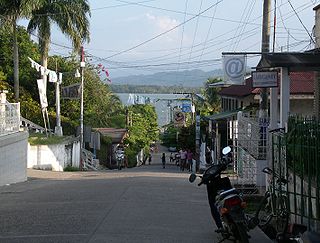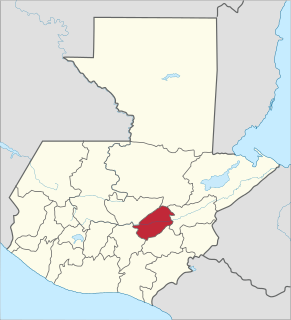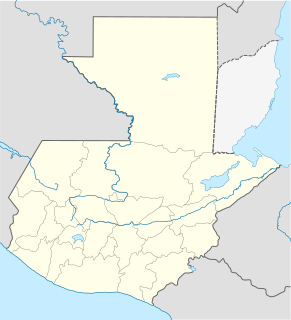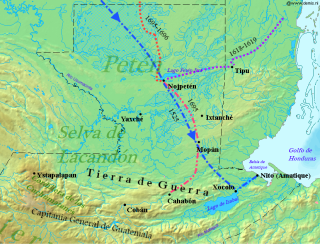
The Acala Ch'ol were a former Ch'ol-speaking Maya people who occupied a territory to the west of the Manche Ch'ol and east of the Chixoy River in what is now the Alta Verapaz Department of Guatemala. [1] The Acala should not be confused with the people of the former Maya territory of Acalan, near the Laguna de Terminos in Mexico. [2]

The Maya peoples are a large group of Indigenous peoples of Mesoamerica. They inhabit southern Mexico, Guatemala, Belize, El Salvador and Honduras. The overarching term "Maya" is a collective designation to include the peoples of the region that share some degree of cultural and linguistic heritage; however, the term embraces many distinct populations, societies, and ethnic groups that each have their own particular traditions, cultures, and historical identity.

The Manche Ch'ol were a former Ch'ol-speaking Maya people inhabiting the extreme south of what is now the Petén Department of modern Guatemala, the area around Lake Izabal, and southern Belize. The Manche Ch'ol took the name Manche from the name of their main settlement. They were the last group of eastern Cholan-speakers to remain independent and ethnically distinct. It is likely that they were descended from the inhabitants of Classic period Maya cities in the southeastern Maya region, such as Nim Li Punit, Copán and Quiriguá.
The Chixoy River or Río Negro is a river in Guatemala. The river is called Río Negro from its sources in the highlands of Huehuetenango and El Quiché until it reaches the Chixoy hydroelectric dam, where the Río Salamá and Rio Carchela converge with the Río Negro. After the Chixoy dam, the river is called Río Chixoy and flows northwards, marking the departmental limits between Alta Verapaz and El Quiché, until it reaches the border with Mexico. From there on it continues along the border for another 113 kilometres (70 mi) as the Salinas river until it finally converges with the Río la Pasión to form the Usumacinta river which flows into the Gulf of Mexico.
By the 17th century the Acala had two principal towns; Cagbalam had 300 multiple-family houses and Culhuacan had over 140. The towns were divided into four sections, each governed by their own ruler. The combined population of these two towns has been estimated at 7,000. [3] The Acala were allies of the Lakandon Ch'ol, their immediate neighbours to the west, and the two peoples sometimes cooperated militarily. [4] The Acala are known to have cultivated cacao and achiote. [5]

The Lakandon Ch'ol were a former Ch’ol-speaking Maya people inhabiting the Lacandon Jungle in what is now lowland Chiapas in Mexico and the bordering regions of northwestern Guatemala, along the tributaries of the upper Usumacinta River and the foothills of the Sierra de los Cuchumatanes.
![Cocoa bean Fatty seed of [[Theobroma cacao]] which is the basis of chocolate](https://upload.wikimedia.org/wikipedia/commons/thumb/e/e0/Cocoa_Pods.JPG/213px-Cocoa_Pods.JPG)
The cocoa bean or simply cocoa, which is also called the cacao bean or cacao, is the dried and fully fermented seed of Theobroma cacao, from which cocoa solids and cocoa butter can be extracted. Cocoa beans are the basis of chocolate, and Mesoamerican foods including tejate, a pre-Hispanic drink that also includes maize.
In 1555 the Spanish carried out a military expedition against the Acala in retaliation for their killing of Dominican friar Domingo de Vico and his companion Andrés López. [6] The Spanish and their Christianised Q'eqchi' Maya allies captured 260 Acalas, and hanged 80 of these; the rest were sold as slaves. [7] Many Acala were rounded up by the Q'eqch'i and forcibly moved to settle the San Marcos and San Juan Acala districts of Cobán, capital of colonial Verapaz. Acala from the Chama region were settled in the San Marcos district; the San Juan Acala district received the former inhabitants of the Chisec region. [5] By 1720 the Acala had been completely extinguished, such that there was not even memory of them. [3] Some of the Lakandon and Acala Ch'ols fled their forcible resettlement in Cobán and returned to former Acala territory along the course of the Xoy River, where they became known as the Ah Xoy. [5]

The Order of Preachers, also known as the Dominican Order, is a mendicant Catholic religious order founded by the Spanish priest Dominic of Caleruega in France, approved by Pope Honorius III via the Papal bull Religiosam vitam on 22 December 1216. Members of the order, who are referred to as Dominicans, generally carry the letters OP after their names, standing for Ordinis Praedicatorum, meaning of the Order of Preachers. Membership in the order includes friars, nuns, active sisters, and affiliated lay or secular Dominicans.
Domingo de Vico was a Spanish Dominican friar during the Spanish conquest of Chiapas and the conquest of Guatemala in the 16th century. He was originally from Jaén. Chronicler Antonio de Remesal recorded that de Vico studied theology in Úbeda and finished his studies in the San Esteban convent in Salamanca.
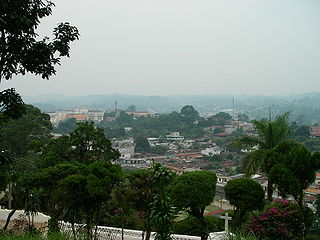
Cobán, fully Santo Domingo de Cobán, is the capital of the department of Alta Verapaz in central Guatemala. It also serves as the administrative center for the surrounding Cobán municipality. It is located 219 km from Guatemala City.


